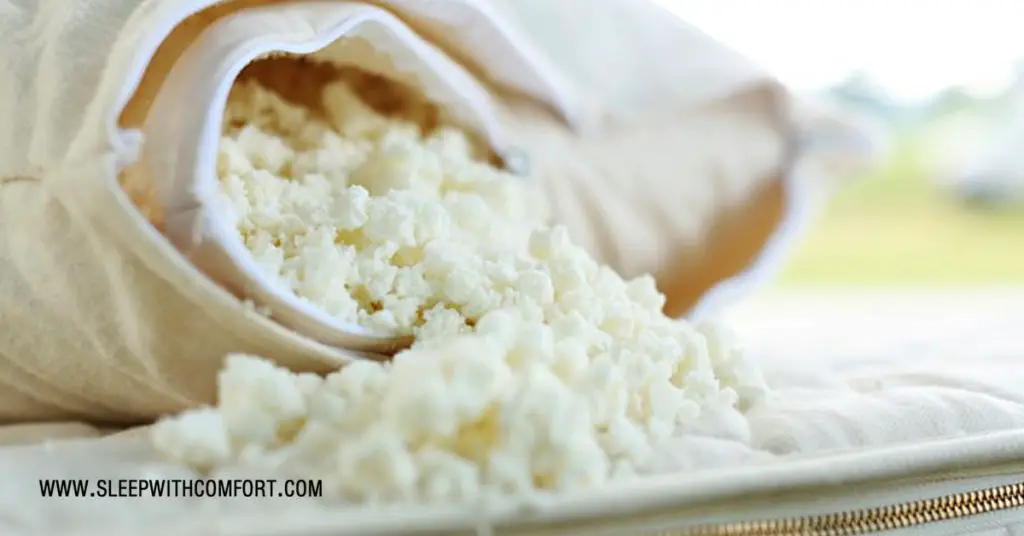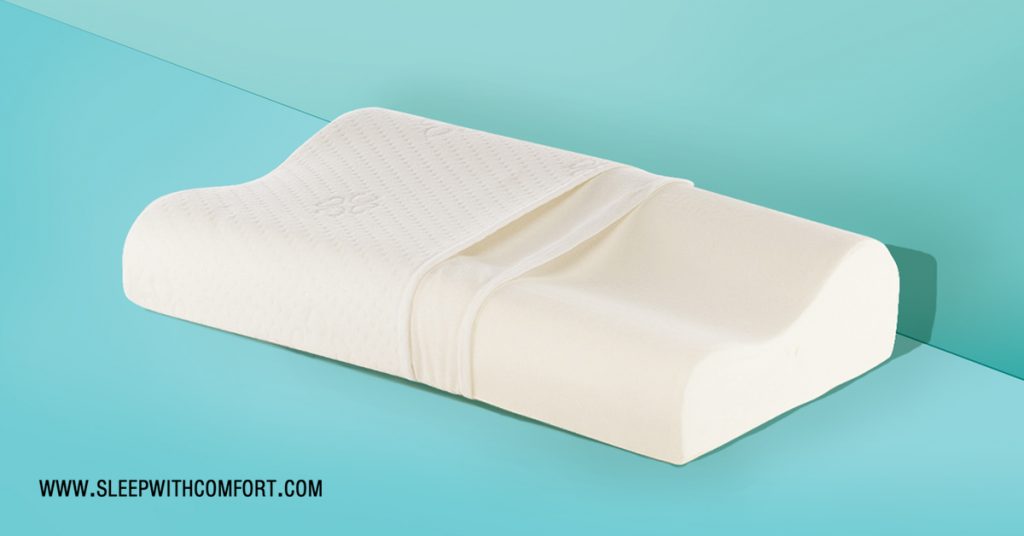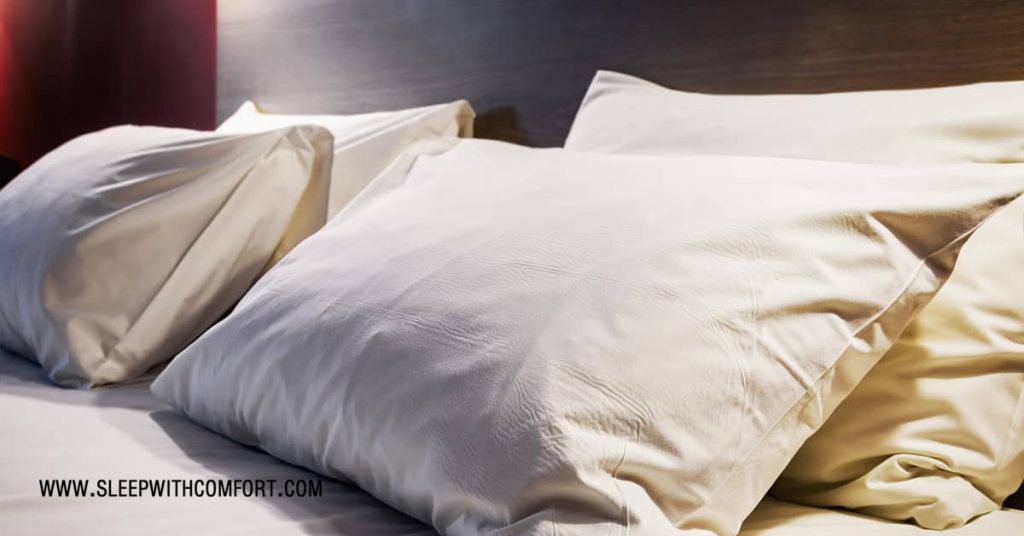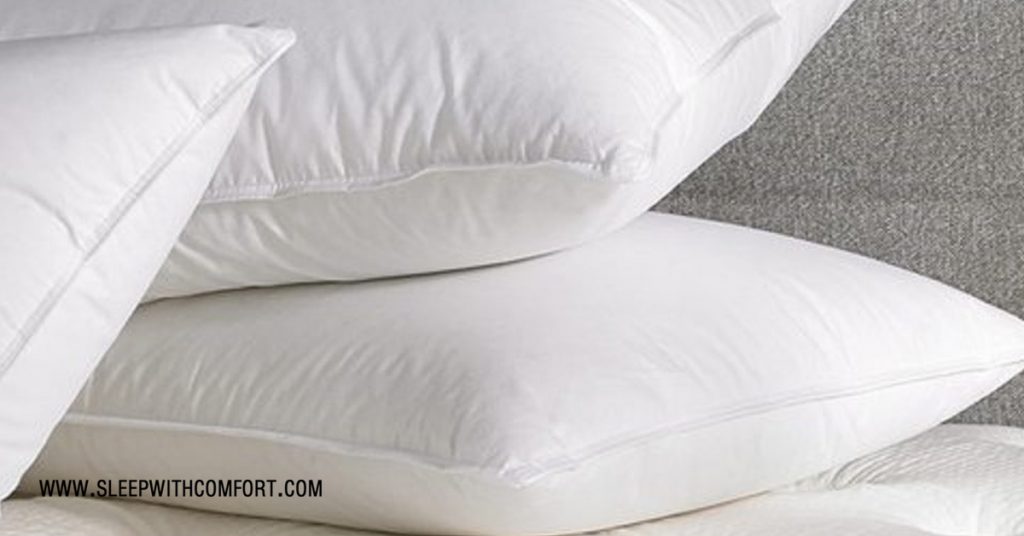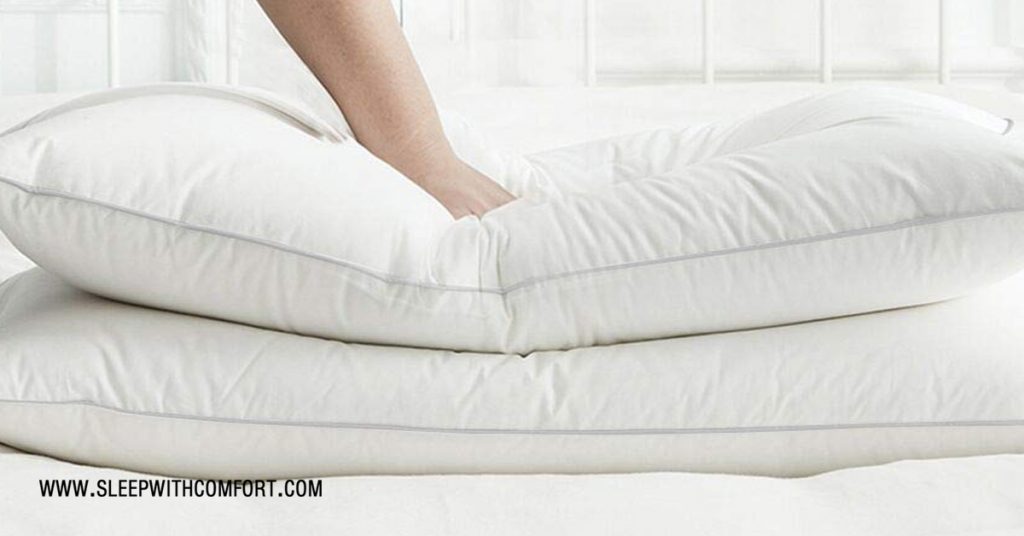Disclosure :Sleepwithcomfort is reader-supported. When you buy through links on our site, we may earn an affiliate commission.
Sleep deprivation caused by nighttime discomfort has ramifications. Muscle growth, tissue healing, and other critical tasks that occur during sleep have less time to take place.
Sleep is an essential component of human life, accounting for approximately one-third of the total lifespan—sleep aids in improving immunity and memory and restoring physical energy. Sleep difficulties and issues, on the other hand, are prevalent. According to a poll done by the World Health Organization, 38 percent of Chinese people have insomnia. Sleep issues have become a significant public health concern, with detrimental consequences for mental and physical health. Sleep systems and support are essential environmental variables that influence body comfort during sleeping.
Prevalent Effects of sleep system:
Sleep deprivation can hurt mood, cognition, and hunger. Falls, obesity, diabetes, high blood pressure, and heart disease are linked to a lack of sleep. The leading causes of sleep deprivation are concentrated pressure and musculoskeletal discomfort caused by an improper sleep system.
“Among lifestyle adjustments, lifting the head to 30 degrees can be beneficial,” says one expert. Choosing the appropriate pillow is a personal choice. Materials that adjust to your shape (memory foam) keep you cool, wick away moisture, or repel mold and dust mites are available in today’s high-tech period (which may help allergy sufferers). Some pillows even keep track of your sleep patterns and play music to wake you up (these can be pricey, in the hundreds of dollars).
Traditional materials are appealing as well. Down and feather pillows contour to your shape and keep dust mites at bay, but they can be hot and pricey. Cotton, wool, or synthetic cotton pillows are less expensive.
Height is an essential feature of pillows that influences cervical spine alignment and is linked to the cervical spine’s mechanical environment. Choosing the right pillow height, on the other hand, is challenging.
Frequent replacement:
To obtain a decent night’s sleep, you need to replace your pillow; the frequency with which you should replace yours might surprise you. The Sleep Foundation recommends replacing your pillow every two years for the best sleep. For the best sleep, the cervical supports the head and neck, preserves muscles, minimizes pressure on the cervical intervertebral disc, and optimizes load distribution between the intervertebral discs. Lack of head and neck support can induce musculoskeletal disorders such as neck pain, scapular pain, and muscle stiffness.
Pillow height is critical To relieve discomfort and improve sleep quality by reducing stress in the cervical spine and relaxing the muscles and neck muscles. It is determined by objective factors, including cervical spine alignment, contact pressure, and muscle activity. These metrics’ measurement techniques and selection criteria are essential.
Relation among Sleeping positions and pillow types:
Keep in mind that different sleeping positions necessitate different pillow types. To support these finicky sleepers, they should sleep on pillows with more incredible lofts than stomach sleepers to support their heads and neck. On the other hand, they must use thin cushions to avoid tension on their necks and backs.
If you sleep on your stomach, you can flatten your pillow and obtain the ideal height.
Three Best Techniques for Flattening a Pillow:
There are three methods to flatten a pillow.
Consistent pillow usage:
It’s natural for a pillow to flatten over time. If you apply it every day for a few weeks, you’ll see a reduction in the loft. It can lose its fluffiness if you sleep on it, lie on t on it, or embrace it.
Compress the pillow:
Place something heavy over your pillow when you aren’t using it. It could be a large book or a box containing all your belongings. To keep the pillow from getting dirty, cover it with a towel.
Stuffing removal:
Removing some of your pillow’s fillings is another method for lowering the loft. Even regular use of the cushion may not be enough to flatten it. Before yIt, you take some time before you can use the optimum flat pillow someone of stuffing and evenly distribute the remaining stuffing on the pillow. Carefully rip the seam on one side and pull out as much stuffing as you need. Continue pressing the cushion to ensure that any remaining fill is evenly distributed and that the pillow is still snug.
Sew the seam shut once you’re happy with the pillow’s form.
Why Would You Flatten A Pillow?
You might be wondering why someone would want to use a flat pillow or even flatten one that was once fluffy. Stomach sleepers must utilize a low loft pillow to achieve ideal comfort and posture. Sleeping on your stomach, for example, might put a strain on your neck and back. A high loft pillow is not recommended because it will add to the stress on these areas. A thin, soft pillow is perfect for preventing bodily aches and straightening your spine.
A flat pillow under the hips might also help to assist your posture. Finally, flat pillows are handy for more than just sleeping. While we use pillow inserts to make our decorative pillows look fuller and more attractive, flat pillows can also be ornamental. They can provide visual interest and use aesthetic and functional cushions on seats.
When Using a Flat Pillow, Keep These Things in Mind.
⦁ Your sleeping position is probably the most crucial consideration while utilizing a Flat pillow.
⦁ Keep in mind that those who sleep on Flat pillows are best for people who sleep on their stomachs.
⦁ If you sleep on your back, you can use a Flat pillow as long as your body is oriented correctly in bed.
Won’t sleep with a Flat pillow?
If you sleep on your side or move around a lot in bed, a fluffy pillow is preferable over a flat one. Because of the lack of height, a flat pillow will not provide appropriate support in these situations.
Finally, be aware of the average standard lofts or heights—the pillow’s stuffing impacts this feature. A low loft pillow can be two to three inches high, whereas an average loft pillow is five inches high. It would help if you chose a pillow that will keep you comfortable and aligns your head and neck with the rest of your body.
What’s inside a Flat pillow?
Most materials, especially those that conform and mold to the shape of the pillow, can be used for flat pillows. Latex, down, and memory foam are among them. Because memory foam adjusts to your body’s profile, thin blocks or shredded memory foam are appropriate materials for flat pillows.
If you prefer a more breathable option, you can choose with the softer down material. You may permanently reduce the loft of your pillow by adjusting the stuffing within it or periodically using it to flatten it. Keep an eye on the inner distribution to avoid sleeping on a clumpy, unpleasant pillow.
A Flat Pillow Can Help You Sleep on Your Stomach First and foremost, sleeping on your stomach is not suggested since your neck and spine are out of alignment. In this position, though, a flat pillow can help you sleep better.
To ease pressure on your lower back, lie down with your head on a flat pillow and another beneath your pelvis.
Flat vs Fluffy pillows:
There is no such thing as a “best” pillow for everyone. Pillows are classified by their “loft,” or height, which divides them into two categories:
Flat and fluffy:
Their Memory foam, for example, is an oddity. Each has its distinct personality traits. Hold your head and neck in postures that are better for sleeping than others. Those who sleep on their stomachs or backs should use a flat pillow. However, a fluffy one is for those who sleep on their sides
. Consider how you sleep and if your pillow provides neck support and spine alignment. Choose your pillow based on your preferences. A flat pillow might help you get your sleep when a fluffy cushion is causing you agony and suffering. Body-centered and relaxed and improve your sleep quality. It’s pretty easy to flatten a pillow and allows you to sleep again quickly.
How you sleep:
However, it would help if you avoided an overly puffy pillow. Pillows that elevate the head stretch the neck and place it in an uncomfortable position. For an extended amount of time, this can cause neck pain, stiffness, and even pain in the shoulders which Radiates to the vertebrae in the back. The idea pillow should keep your head and neck parallel to the ground. The back’s natural curve begins with pillows that are advertised as “medium loft,” which are typically 3-5″ (7.62-12.7 cm) in height.
⦁ According to proponents of fluffy pillows, it’s like sleeping with your head on a cloud. Perfect for when you don’t need a lot of height to support yourself.
⦁ On the other hand, flat pillows are great for people who sleep on their stomachs or backs. Back sleepers, in particular, should be on the lookout for symptoms of Sleep Apnea. It has to do with how gravity can force your tongue into an awkward posture. It obstructs your airway when you sleep.
⦁ The difficulty with flat pillows is to keep the right amount of head support. And neck without raising the head too high using an appropriate flat pillow is nearly effortless. As if you were laying straight on the mattress, if you stand up straight and then lie down, your neck should be in the same position and precise location.
Foam Memory:
Memory foam pillows are a terrific third option with standard flat and feather pillows. Pillows. They’re made of a unique material that absorbs the weight of your head and neck. A memory pillow enables it to conform to your body’s particular contour, and, as a result, it should provide the perfect level of comfort and support. These pillows might be made of foam or “memory gel” Pillows. Memory foam pillows might be the solution for people who don’t obtain enough support with flat or fluffy pillows (although some individuals dislike them because they are Difficult for their taste). Any sleeping posture is ideal for memory foam pillows if you consider trying out a memory foam pillow to help you sleep better at night.
Memory foam pillows are an unusual kind of pillow.
The weight of your body is absorbed and conformed by heart foam. Taking in information
In contrast to ordinary pillows, the pillow doesn’t flatten over time. Memory, instead.
After absorbing oils and water and body skin cells, foam flattens out. Like any pillow, employing a pillow protector will extend the lifetime of your memory foam.
The pillow will last for an extended time:
Do Pillows Flatten When Used?
While most pillows flatten over time, the pillow’s construction and filling play a job.
The materials utilized in them will impact how soon the pillow flattens, likewise because of its durability. In general, how long the pillow lasts.
Dirt and skin oils can collect on pillows and cause discomfort. They’ll also die, but this usually takes an extended period if you do not utilize a pillow protector; dust mites are controversial.
Polyester pillows:
Which are on the lower end of the pillow spectrum, and flatten quickly.
Fastest of all the pillows, simply lying on a polyester pillow will flatten it in seconds.
After some days or weeks, you’ll be able to flatten a polyester cushion faster if you want to place something hefty on top of it the day before sleep.
Feather and down pillows:
On the opposite hand, keep their fluffiness for an extended period of your time.
Very tough to flatten over a protracted period of your time. You may do away with a number of the stuffing if you want the pillow to appear as if it’s getting thinner, Flatter, but this will backfire if you underestimate the number of support you’ll have or are not careful. Feathers provide a source of nourishment.
Michael Breus, a sleep doctor, created a test that he believes can tell you whether or not you’ve got a sleeping disorder. It is time to exchange the pillow because it’s too flat. You start by folding your shoes.
You place a shoe on the pillow’s back in half a pillow and forsake. Your pillow cannot support your head if it doesn’t “spring back” and neck. So you have to replace it immediately if you want to own an honest night’s sleep.
Conclusion:
If you choose a soft loft pillow if you sleep on your stomach, methods are often wont to flatten a cushion swiftly. Start by utilizing it daily or covering it with a weighted object while you are not lying down. If your pillow isn’t comfortable, it is time to switch it. Remove a part of the stuffing from your cushion if it’s still fluffy.
On the other hand, when will you utilize a flat pillow? A high loft pillow isn’t recommended for stomach sleepers since it causes strain on their necks and lower back. May additionally require a flat pillow to boost an area’s aesthetics or function, an ornamental and functional pillow.
FAQs:
Q How does one make a pillow flat?
A: Place a hefty object on top of the pillow. After some days, a thick book, a significant box, or a pair of bricks wrapped in a towel will flatten a pillow.
Q: what’s the time it takes to flatten a pillow?
A: For 48 hours, place the pillow under the mattress. If your pillow is causing a painful bump in your neck, it can facilitate your sleep better. it is easy to flatten a pillow and allows you to return to sleep quickly
Q: What position should your pillow be in back pain?
A: Placing a pillow or two beneath the knees helps alleviate back pain and is the most soothing position for the rear. When sleeping on one’s side, a pillow is employed. A cushion should support the top and neck when sleeping on one’s side so that the spine maintains a straight and natural horizontal line.
Q: Why is it that my pillows are constantly flat?
A: Your pillow flattens most frequently because your head is squeezed against the loose material inside the pillow for an extended period of your time. The fabric loses its fluffiness and becomes flat as a result of this. Moisture could even be answerable for a pillow’s flatness. Pillows do have a period.






